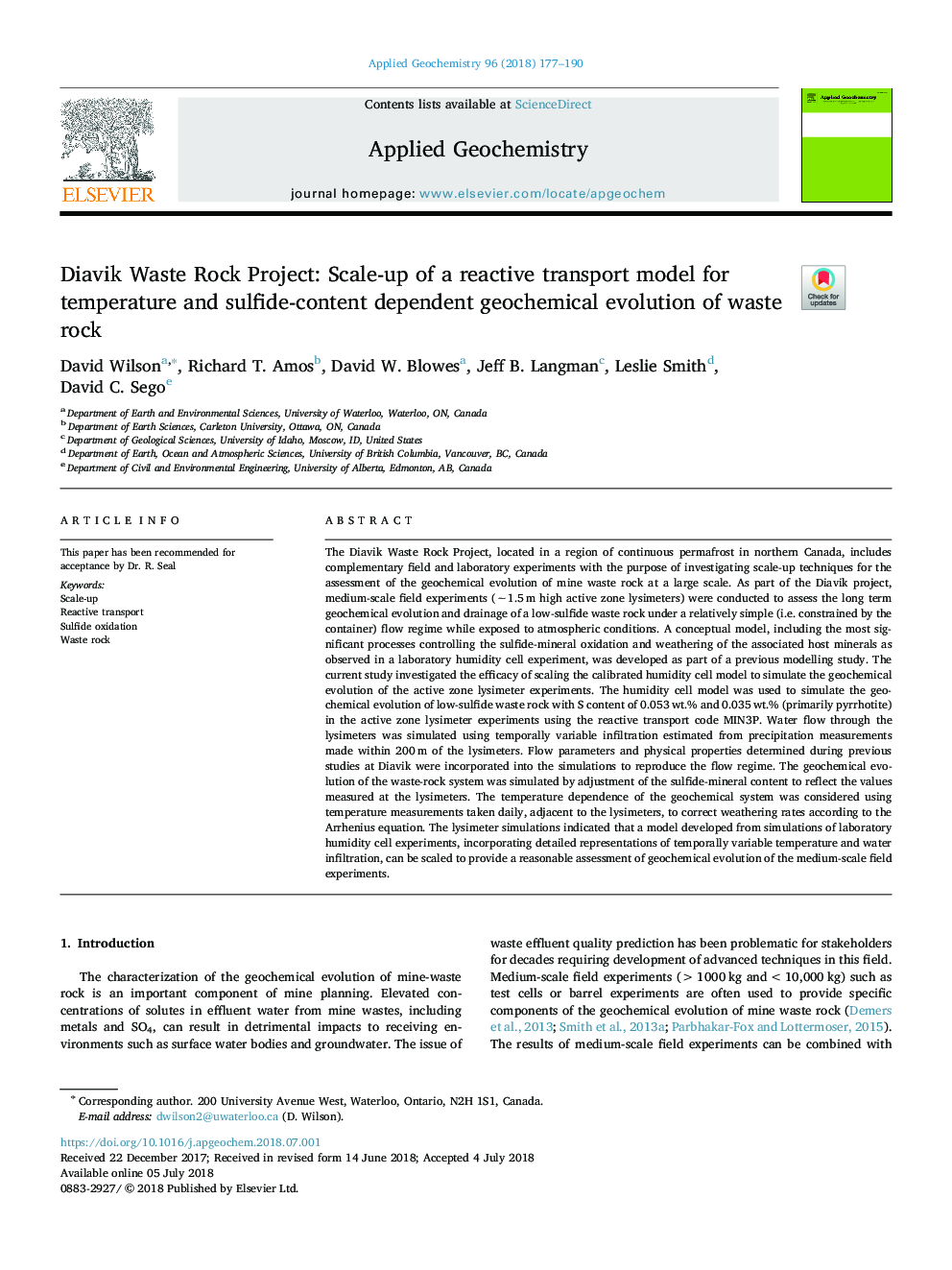| کد مقاله | کد نشریه | سال انتشار | مقاله انگلیسی | نسخه تمام متن |
|---|---|---|---|---|
| 8863039 | 1620195 | 2018 | 14 صفحه PDF | دانلود رایگان |
عنوان انگلیسی مقاله ISI
Diavik Waste Rock Project: Scale-up of a reactive transport model for temperature and sulfide-content dependent geochemical evolution of waste rock
دانلود مقاله + سفارش ترجمه
دانلود مقاله ISI انگلیسی
رایگان برای ایرانیان
کلمات کلیدی
موضوعات مرتبط
مهندسی و علوم پایه
علوم زمین و سیارات
ژئوشیمی و پترولوژی
پیش نمایش صفحه اول مقاله

چکیده انگلیسی
The Diavik Waste Rock Project, located in a region of continuous permafrost in northern Canada, includes complementary field and laboratory experiments with the purpose of investigating scale-up techniques for the assessment of the geochemical evolution of mine waste rock at a large scale. As part of the Diavik project, medium-scale field experiments (â¼1.5â¯m high active zone lysimeters) were conducted to assess the long term geochemical evolution and drainage of a low-sulfide waste rock under a relatively simple (i.e. constrained by the container) flow regime while exposed to atmospheric conditions. A conceptual model, including the most significant processes controlling the sulfide-mineral oxidation and weathering of the associated host minerals as observed in a laboratory humidity cell experiment, was developed as part of a previous modelling study. The current study investigated the efficacy of scaling the calibrated humidity cell model to simulate the geochemical evolution of the active zone lysimeter experiments. The humidity cell model was used to simulate the geochemical evolution of low-sulfide waste rock with S content of 0.053â¯wt.% and 0.035â¯wt.% (primarily pyrrhotite) in the active zone lysimeter experiments using the reactive transport code MIN3P. Water flow through the lysimeters was simulated using temporally variable infiltration estimated from precipitation measurements made within 200â¯m of the lysimeters. Flow parameters and physical properties determined during previous studies at Diavik were incorporated into the simulations to reproduce the flow regime. The geochemical evolution of the waste-rock system was simulated by adjustment of the sulfide-mineral content to reflect the values measured at the lysimeters. The temperature dependence of the geochemical system was considered using temperature measurements taken daily, adjacent to the lysimeters, to correct weathering rates according to the Arrhenius equation. The lysimeter simulations indicated that a model developed from simulations of laboratory humidity cell experiments, incorporating detailed representations of temporally variable temperature and water infiltration, can be scaled to provide a reasonable assessment of geochemical evolution of the medium-scale field experiments.
ناشر
Database: Elsevier - ScienceDirect (ساینس دایرکت)
Journal: Applied Geochemistry - Volume 96, September 2018, Pages 177-190
Journal: Applied Geochemistry - Volume 96, September 2018, Pages 177-190
نویسندگان
David Wilson, Richard T. Amos, David W. Blowes, Jeff B. Langman, Leslie Smith, David C. Sego,